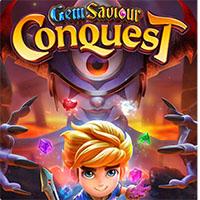

















Building on the foundational insights from The Role of Themes and Mechanics in Engaging Digital Experiences, this article explores how integrating storytelling and emotional design deepens user engagement. While themes and mechanics set the stage for interaction, narratives and emotions serve as the catalysts that transform passive users into active participants. Understanding this layered relationship allows designers and developers to craft digital experiences that resonate more authentically and sustainably with their audiences.
1. The Power of Narrative in Digital Engagement
a. How storytelling creates meaningful connections with users
Narratives serve as a bridge between digital content and human experience. When users engage with a story, they are invited into a world that mirrors their own aspirations, fears, or curiosities. For instance, the success of platforms like Duolingo hinges on framing language learning within relatable journeys, fostering a sense of progress and personal growth. Such storytelling creates an emotional tether, making users feel invested beyond mere functionality.
b. The influence of narrative arcs on user motivation and retention
Narrative arcs—comprising introduction, conflict, climax, and resolution—drive user motivation by framing their journey within a compelling storyline. For example, fitness apps like Zombies, Run! embed narrative arcs where users experience a story while exercising, incentivizing continued use through suspense and achievement. Research indicates that stories with clear arcs can boost user retention rates by up to 30%, as they evoke a sense of purpose and progress.
c. Examples of successful narrative integration in digital experiences
- Reed: An interactive storytelling app that guides users through environmental conservation narratives, fostering awareness and action.
- Pokemon GO: Combines location-based mechanics with a narrative of exploration and collection, encouraging social and physical activity.
- Heuristic Games: Uses episodic storytelling to keep users engaged over long periods, integrating user choices into evolving storylines.
2. Emotional Design: Beyond Aesthetics to Deep Engagement
a. The role of emotional resonance in user experience
Emotional resonance transforms simple interactions into memorable experiences. When users feel understood, inspired, or even challenged, their engagement becomes more profound. For example, meditation apps like Headspace utilize calming visuals and soothing narration to evoke tranquility, reinforcing a sense of well-being that encourages daily use.
b. Techniques for evoking specific emotions through design and content
Design techniques such as color psychology, sound design, and narrative tone are instrumental in eliciting targeted emotions. Warm colors like orange and red stimulate excitement or urgency, while blue fosters trust and calmness. Content-wise, storytelling that highlights user success stories or challenges can evoke feelings of pride and motivation. For example, Duolingo’s use of playful, empathetic language fosters a friendly environment that encourages persistence.
c. Case studies of emotion-driven engagement in digital platforms
| Platform | Emotion Elicited | Technique Used | Outcome |
|---|---|---|---|
| Nike Training Club | Empowerment | Personal success stories & motivational messages | Increased user commitment and brand loyalty |
| Calm | Relaxation & Stress Relief | Soothing visuals, gentle sounds, and guided meditations | Enhanced user retention and positive associations |
3. Bridging Themes, Mechanics, and Emotions: A Holistic Approach
a. How thematic consistency amplifies emotional impact
When themes are consistently woven into mechanics and narratives, they reinforce emotional responses. For instance, the fantasy theme in a game like The Legend of Zelda is reflected through storyline, artwork, and gameplay mechanics, creating a cohesive world that evokes wonder and nostalgia. Consistency ensures that every interaction resonates with the overarching emotional tone, deepening immersion.
b. The interplay between mechanics and emotional responses
Game mechanics such as reward systems, progression, and challenge levels directly influence emotional states like achievement, frustration, or excitement. For example, dynamic difficulty adjustment in platforms like Celeste maintains a sense of challenge while preventing frustration, keeping players in a state of flow—a key emotional zone associated with engagement. Mechanics that adapt to user responses foster personalized emotional experiences.
c. Designing for emotional flow within thematic frameworks
Emotional flow refers to the seamless movement through different emotional states aligned with thematic elements. A well-designed experience guides users from curiosity to excitement, then to reflection, ensuring each phase builds upon the last. An example is the narrative-driven platform Journey, where visual and auditory cues guide emotional transitions, creating a compelling, immersive experience grounded in a consistent theme.
4. The Psychology of Emotional Engagement in Digital Media
a. Understanding emotional triggers and user psychology
Research indicates that emotional triggers such as achievement, social belonging, and curiosity activate neural pathways associated with reward and motivation. For example, social features in platforms like Strava tap into the human need for connection, triggering positive emotions that increase engagement and loyalty. Recognizing these psychological triggers allows designers to craft experiences that naturally resonate with user motivations.
b. The impact of emotional storytelling on user loyalty
Emotional storytelling fosters a sense of authenticity and trust, which are critical for long-term loyalty. Studies show that users who connect emotionally with a brand or platform are more likely to remain engaged even during periods of low activity. For instance, charitable platforms that showcase real stories of impact deepen emotional bonds, translating into sustained support and advocacy.
c. Ethical considerations in manipulating emotions
While leveraging emotions enhances engagement, it must be done ethically. Manipulating emotional responses without transparency can erode user trust. Ethical design involves respecting user autonomy, avoiding exploitation of vulnerabilities, and providing meaningful value. For example, transparency in data use and clear consent mechanisms underpin ethical emotional engagement strategies, fostering long-term trust rather than short-term gains.
5. Non-Obvious Dimensions of Narrative and Emotion in Engagement
a. The role of subconscious cues and symbolism
Subconscious cues such as color schemes, visual metaphors, and sound motifs subtly influence emotional states. For example, the use of certain symbols or color palettes can evoke feelings of safety or danger without explicit explanation. Incorporating symbolism enriches the narrative layer, making the experience more layered and emotionally resonant.
b. Cultural and individual differences in emotional response
Emotional triggers are culturally nuanced. A gesture or color that signifies happiness in one culture might evoke discomfort in another. Personal experiences also shape responses; thus, adaptive design that considers user context enhances engagement. For instance, culturally sensitive content in global apps like TikTok ensures respectful and effective emotional connection across diverse audiences.
c. Using unpredictability and surprise to deepen engagement
Introducing elements of unpredictability—such as surprise rewards or plot twists—stimulates curiosity and emotional investment. Games like The Binding of Isaac use random level generation and unexpected narrative turns to maintain suspense. These strategies keep users engaged by activating the brain’s reward system and satisfying the innate desire for novelty.
6. Measuring the Effectiveness of Narrative and Emotional Strategies
a. Metrics for emotional engagement and narrative impact
Quantitative metrics include time spent, repeat visits, and conversion rates, while qualitative measures involve user feedback, sentiment analysis, and emotional self-reporting tools. For example, platforms like Spotify analyze listening patterns alongside user reviews to gauge emotional resonance of playlists and campaigns.
b. Feedback loops and adaptive storytelling techniques
Real-time data allows for dynamic adjustment of narratives and emotional cues. Chatbots and interactive stories employ user responses to tailor content, creating a personalized emotional journey. Netflix’s use of viewing history to recommend emotionally aligned content exemplifies adaptive storytelling that maintains engagement.
c. Continuous improvement through user data analysis
Analyzing user behavior and feedback helps refine narrative techniques and emotional triggers. Machine learning models can identify patterns, guiding content creators to optimize emotional impact. For instance, A/B testing different story elements can reveal which variations generate the strongest emotional responses, leading to more compelling experiences over time.
7. Reintegrating Themes and Mechanics with Emotional and Narrative Depth
a. How refined themes and mechanics enhance emotional storytelling
Refined themes and mechanics act as the scaffolding that supports emotional storytelling. A well-designed mechanic like a moral choice system in a game adds depth to the narrative, allowing users to influence emotional outcomes. For example, Life is Strange leverages mechanic-driven choices that evoke empathy and moral reflection, enriching the overall emotional experience.
b. The importance of user agency in narrative-driven experiences
Empowering users with agency fosters a sense of ownership and emotional investment. Interactive stories like Detroit: Become Human demonstrate how user decisions shape narrative outcomes, intensifying emotional engagement and personal relevance.
